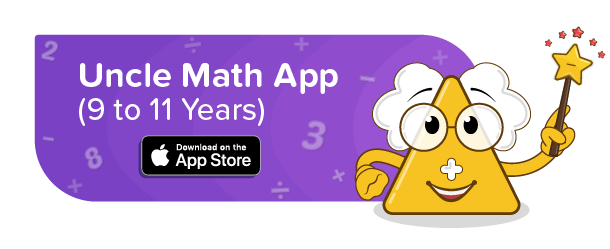/Title/Guide62_LeastCommonMultiple-Title_v1.png)
The concept of the Least Common Multiple or the lowest common multiple (LCM) is an important topic in mathematics that helps us find the smallest common multiple of two or more numbers.
This teaching guide is designed to introduce primary students to the concept of LCM in a fun and engaging way. The activities and explanations provided here are suitable for students in primary grades (approximately ages 9 – 11 years). Let’s get started!
The smallest common multiple of any 2 given numbers is its least common multiple (LCM). It can also be computed for two or more numbers. There are several methods for determining the LCM of a given set of numbers as listed below :
- LCM by Listing Method
- LCM by the Prime Factorization Method
- LCM using the Division Method
Least Common Multiple (LCM) - Listing Method
It is a quick and easy method to find LCM. Following steps are used to find the least common multiple of given numbers by the listing method.
- List the first few multiples of the given numbers.
- Find out the common multiples of the given numbers.
- Pick the least common multiple.
For example : Find the LCM of 4 and 6 by a listing method.
- Listing the first few multiples of 4 and 6 :
Multiples of 4 – 4, 8, 12, 24, 28, 32, 36, 40, 44, 48, 52.
Multiples of 6 – 6, 12, 18, 24, 30, 36, 42, 48, 54, 60, 66.
- Common multiples of 4 and 6 are 12, 24, and 36. Here, 12 is the least multiple which is common in multiples of 4 and 6.
- The least common multiple (LCM) of 4 and 6 is 12
Least Common Multiple (LCM) - Common Division Method
LCM by common division means to calculate LCM for the given numbers by dividing all the given numbers by a common prime number and the prime factors are utilized to calculate the LCM of those numbers. Let us learn about this method by following the steps below:
- Write all the given numbers separated by commas in a straight row.
- Divide all the given numbers by a common prime number.
- Repeatedly divide until the prime factors are obtained.
- Multiply together all the prime factors obtained, and the product of these prime factors is the required LCM.
For example, LCM of 10, 18, and 20 is calculated by the common division method as shown below :
/Activities/Guide62_LeastCommonMultiple-Example-1_v1.png)
Least Common Multiple (LCM) - Prime Factorization Method
Prime factorization is another method for determining the LCM of given numbers.
- Using the repeated division method, find the prime factors of the given numbers.
- Express the numbers in exponent form. Determine the product of only the prime factors with the greatest power.
- The LCM of the given numbers is the product of these factors with the highest powers.
For example, LCM of 12, 16, and 24 is calculated by the prime factorization method as shown below :
Listing prime factors of all numbers and expressing prime factors in exponent form :
12 = 2 x 2 x 3 = 22 x 31
16 = 2 x 2 x 2 x 2 = 24
24 = 2 x 2 x 2 x 3 = 23 x 31
Now finding the product of the prime factors with the highest powers we get the LCM. Hence, there are 24 x 31
So the LCM of 12, 16 and 24 will be :
LCM (12, 16, 24) = 2 x 2 x 2 x 2 x 3 = 48
Relation Between HCF And LCM
The product of given 2 natural numbers is always equivalent to the product of its LCM and HCF.
/Activities/Guide62_LeastCommonMultiple-Example-2_v1.png)
Teaching LCM with kid-friendly, clear, and easy-to-understand posters from Uncle Math School by Fun2Do Labs :
Ignite kids’ curiosity with engaging stories for role play and skits, making the learning of this concept an exciting and effective experience. Teaching LCM through stories from Uncle Math School by Fun2Do Labs :
Learning LCM can be made enjoyable by incorporating interactive games and activities.
Drop Marbles!
This is one of the easiest methods to determine LCM without using any calculations. Children enjoy learning LCM using this method. As LCM is the least common multiple, children must be well-versed in multiplication tables to find multiples of the given numbers. This activity can be carried out in the following steps :
- Take around 30 bowls, label them from 1 to 30, and arrange them in the sequence from 1 to 30.
- Take marbles of different colours and put them in the basket.
- To determine the LCM of 2, 3, and 6, first put blue marbles in the bowls with numbers as multiples of 2 like 2, 4, 6, 8, 10, 12, 14, 16, 18.
- Now put yellow marbles in the bowls with numbers as multiples of 3 like 3, 6, 9, 12, 15, 18.
- Put green marbles in the bowls with numbers as multiples of 6 like 6, 12, 18, 24.
- Pick the bowls with all three coloured marbles : 6, 12, and 18.
- LCM is the least common multiple, so LCM of 2, 3, and 6 is 6.
Help your kids practise LCM with interesting and engaging fun worksheets and solutions from Uncle Math by Fun2Do Labs.





/Worksheets/Worksheet689_LCM_CCBy_v2.png)
/Worksheets/Solution689_LCM_CCBy_v2.png)
/Worksheets/Worksheet691_HCFAndLCM_CCBy_v2.png)
/Worksheets/Solution691_HCFAndLCM_CCBy_v2.png)
/Worksheets/Worksheet692_HCFAndLCM_CCBy_v2.png)
/Worksheets/Solution692_HCFAndLCM_CCBy_v2.png)
/Worksheets/Worksheet693_WordProblems_CCBy_v2.png)
/Worksheets/Solution693_WordProblems_CCBy_v2.png)
/Worksheets/Worksheet694_CommonDivisionMethod_CCBy_v2.png)
/Worksheets/Solution694_CommonDivisionMethod_CCBy_v2.png)